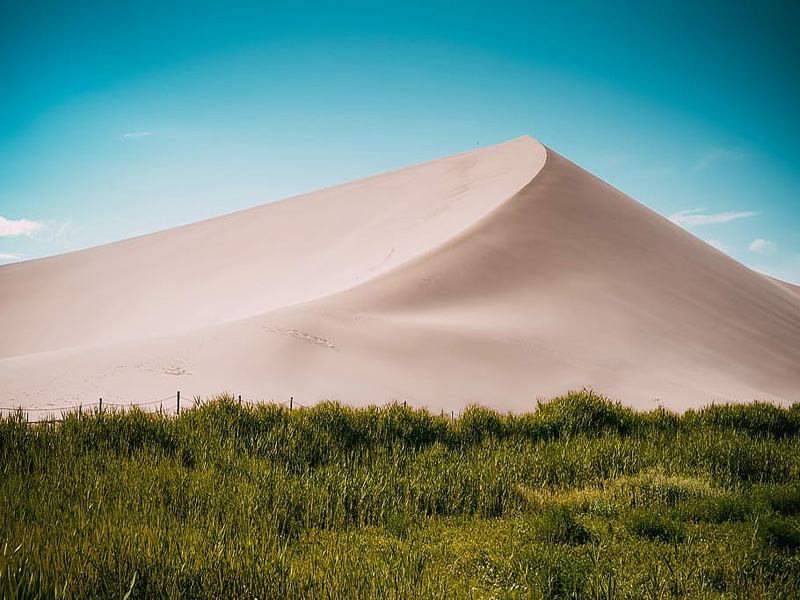THE GREEN DESERT: Agriculture in the UAE
(A literature review)
About UAE
UAE is a Western Asian country located in the eastern end of the Arabian Peninsula which borders Oman and Saudi Arabia by land and the Persian Gulf with Qatar and Iran. Abu Dhabi is the capital of the UAE. About 9.82 million are living in UAE. UAE is one of the leading oil and natural gas suppliers in the world; the sixth-largest oil and seventh-largest natural gas supplier. Due to the harsh and warm climatic conditions agriculture had been a great challenge to the UAE. By that time, they have evolved with some supreme technologies to make their country green.
Why agriculture is a challenge in UAE?
The agriculture of the UAE is mainly challenged by the harsh and warm weather conditions around the region. Harsh and non-fertile soil, limited water supplies and accesses, lack of better lands for agriculture, unexpected rude dry storms always made perfect agriculture a dream in UAE. Their agricultural practices were severely impacted in the 1970s and 80’s when they realized that water supplies to agricultural lands have started to drain all their underground water beds. It caused a break in the initiation of UAE’s agriculture at its beginning.
Agricultural practices in early UAE
From the early 1970s and ’80s, UAE focused on its agricultural growths and developments. Fishery, dates and plums, and animal husbandry were focused by the country to develop their reputation on those. As they had oil supplies which drained a lot of money to the country importing necessary agricultural products was not a problem. But Instead of that what the rulers thought was to develop and encourage the country’s agricultural production. They aimed to self-harvest their own to reduce the imports. Dates, potatoes, poultry meat, and tomatoes were started to grow within the country. They established a large main farm in Ra’s Al Khaimah which was enriched by the waters of the Oman river. Tomatoes, melons, dates, and most of their vegetables, fruits, and flowers were started to grow. Other than that, they established two large wheat farms in Abu Dhabi to encourage and boost their harvest.
What made UAE Green?
Former president of UAE His Highness Shaikh Zayed bin Sultan Al Nahyan, who was the far-sighted and the leader behind all their determinations on agriculture, invested large amounts of money to encourage and develop their agriculture with limitless generosity. Other than that, establishing a large research and farming center in Ra’s Al Khaimah and others in their capital, Abu Dhabi, made a great initiation for their agricultural growth. Abu Dhabi’s Arid Land research center was enriched by the latest and innovative techniques to have the highest yield. They invented special irrigation and hydroponic techniques to that which ultimately 1,055,000 tons of vegetables, melons, and 358,000 tons of melons in the late 1990s. in the same manner, they initiated large amounts of dates production which satisfied their export agriculture even. By the end of the 1990s, UAE’s agriculture was able to fulfill the need for vegetables and fruits of 60% of their country.
Advanced agricultural practices and limitless generosity of the ruling system made the greatest achievements of UAE’s agriculture. Establishing large organic farms, applying modest technologies to agriculture such as soilless plantation, applying accurate and well-planned organic farming techniques in organic farms made a maximum harvest from the UAE’s cultivations. In addition to the farming initiations, UAE initiated some green land concepts. The government allocated large amounts on forestation and landscaping, freely distributed trees and shrubs to schools government offices, and public residences. Moreover, they have taken every action to prevent desertification and established model farms in deserts which have been transferred into green forests by now.
Gifts by the green to the Green Desert
UAE is now having strong arms in agricultural exports. They are exporting flowers, vegetables, fruits, and dates all over the world. The heart of a harsh desert is now a massive garden of attractive and valuable flowers. Most of the dusty and soil nature has been replaced by green and pleasant lands by now. All most all residents are consuming vegetables and fruits made in own country.
Written by : Kalindu Wickramasinghe



